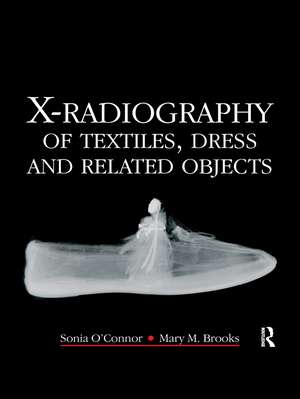X-Radiography of Textiles, Dress and Related Objects
Autor Sonia O'Connor, Mary Brooksen Limba Engleză Paperback – 30 iun 2020
This book explores techniques for X-raying textiles. It describes approaches to image interpretation and explains how, through digitisation and digital image manipulation, maximum information can be realised. Case studies include archaeological, ecclesiastical and ethnographic textiles, items of dress and accessories, upholstery, quilts, embroideries, dolls and toys. Museum professionals will find this stimulating book an essential guide for developing their own practice or commissioning textile X-radiographs.
Preț: 229.57 lei
Preț vechi: 265.71 lei
-14% Nou
Puncte Express: 344
Preț estimativ în valută:
43.94€ • 47.75$ • 36.94£
43.94€ • 47.75$ • 36.94£
Carte tipărită la comandă
Livrare economică 21 aprilie-05 mai
Preluare comenzi: 021 569.72.76
Specificații
ISBN-13: 9780367606329
ISBN-10: 0367606321
Pagini: 360
Dimensiuni: 189 x 246 x 21 mm
Greutate: 1.12 kg
Ediția:1
Editura: Taylor & Francis
Colecția Routledge
Locul publicării:Oxford, United Kingdom
ISBN-10: 0367606321
Pagini: 360
Dimensiuni: 189 x 246 x 21 mm
Greutate: 1.12 kg
Ediția:1
Editura: Taylor & Francis
Colecția Routledge
Locul publicării:Oxford, United Kingdom
Cuprins
Introduction
Principles of X-radiographic imaging
Technology and techniques
X-radiographs, digitisation and digital image processing
Image interpretation:ways and means
What not to X-ray
Case studies: furnishings and upholstery, musical instruments, dolls & toys, costume and accessories, flat textiles, materials identification, archaeological textiles, textile technology, patterns of decay, surface decoration
Health and safety
Apparatus
Index
Principles of X-radiographic imaging
Technology and techniques
X-radiographs, digitisation and digital image processing
Image interpretation:ways and means
What not to X-ray
Case studies: furnishings and upholstery, musical instruments, dolls & toys, costume and accessories, flat textiles, materials identification, archaeological textiles, textile technology, patterns of decay, surface decoration
Health and safety
Apparatus
Index
Descriere
X-radiography of textile objects reveals hidden features as well as unexpected components and materials. This non-destructive technique throws light on construction, manufacturing techniques, use, wear, repair, patterns of decay and dating. X-radiography improves artefact documentation and interpretation as well as guiding conservation approaches b
